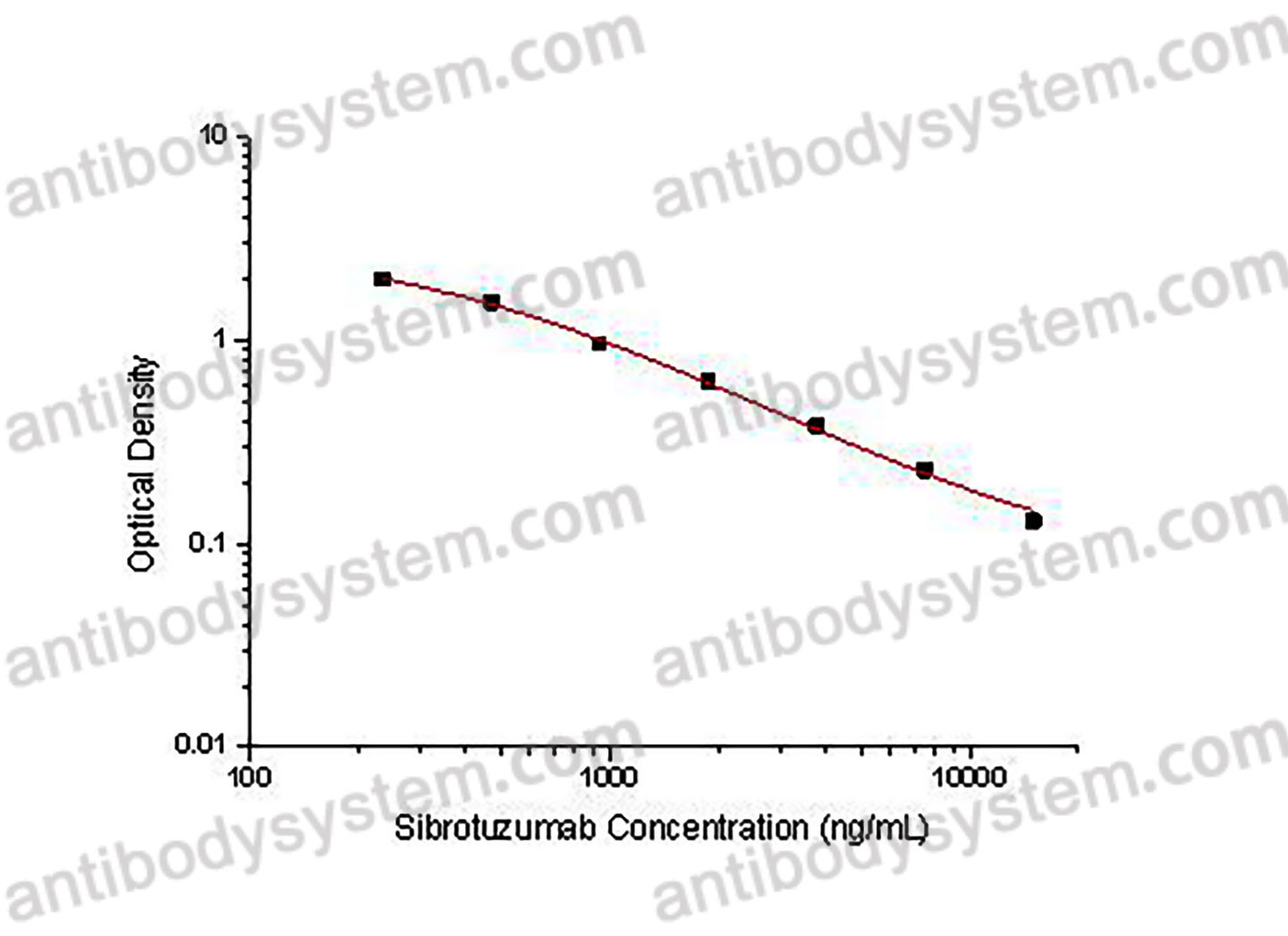Catalog No.
KDG32201
Description
PRINCIPLE OF THE ASSAY This assay employs the quantitative competitive enzyme immunoassay technique. Recombinant Human FAP has been pre-coated onto a microplate. Standards or samples are premixed with biotin-labeled antibody and then pipetted into the wells. Sibrotuzumab in the sample competitively binds to the pre-coated protein with biotin-labeled Sibrotuzumab. After washing away any unbound substances, Streptavidin-HRP is added to the wells. Following a wash to remove any unbound enzyme reagent, a substrate solution is added to the wells and color develops in inversely proportion to the amount of Sibrotuzumab bound in the initial step. The color development is stopped and the intensity of the color is measured.
Applications
Used for the quantitative determination of Sibrotuzumab concentration in serum and plasma.
Detection method
Colorimetric
Sample type
Plasma, Serum
Assay type
Quantitative
Range
234.38 - 15,000 ng/mL
Sensitivity
40.93 ng/mL
Precision
Intra-Assay Precision (Precision within an assay): <20%
Three samples of known concentration were tested sixteen times on one plate to assess intra-assay precision.
Inter-Assay Precision (Precision between assays): <20%
Three samples of known concentration were tested in twenty four separate assays to assess inter-assay precision.
|
|
Intra-Assay Precision |
Inter-Assay Precision |
||||
|
Sample |
1 |
2 |
3 |
1 |
2 |
3 |
|
n |
16 |
16 |
16 |
24 |
24 |
24 |
|
Mean (ng/mL) |
7632.9 |
1838.4 |
519.8 |
8776.2 |
1762.2 |
529.0 |
|
Standard deviation |
679.5 |
128.9 |
19.9 |
1017.6 |
109.0 |
48.5 |
|
CV (%) |
8.9 |
7.0 |
3.8 |
11.6 |
6.2 |
9.2 |
Recovery
80-120%
Shipping
2-8 ℃
Stability and Storage
When the kit was stored at the recommended temperature for 6 months, the signal intensity decreased by less than 20%.
Alternative Names
BIBH1, CAS: 216669-97-5
Background
Sibrotuzumab (also known as BIBH 1) is a humanized monoclonal antibody (mAb) which has the high affinity to bind to fibroblast activation protein (FAP), which is highly expressed by stroma cells of tumors. In addition, it was intended and developed by Boehringer Ingelheim Pharma KG for the treatment of cancer. Firstly, this drug was designed to fight against various malignancies, such as colorectal, non-small cell lung, breast, as well as head and neck cancer. However, it is disappointing that in 2003 it failed a phase II clinical trial for metastatic colorectal cancer. At present, there is no relevant clinically approved information disclosure.

